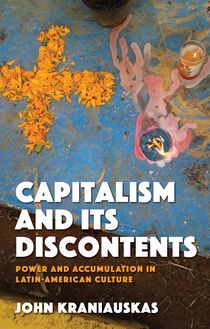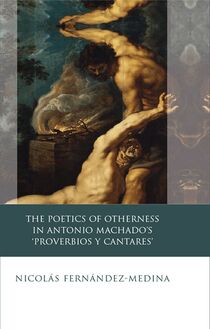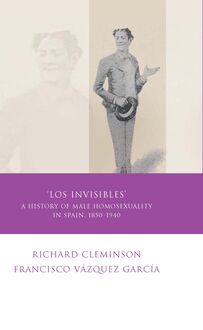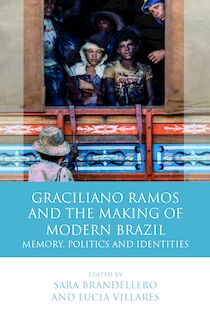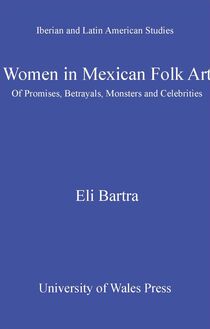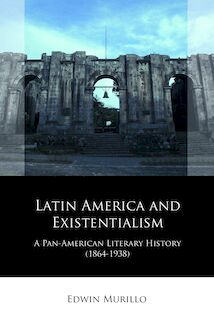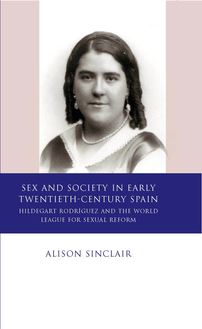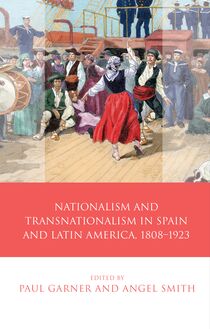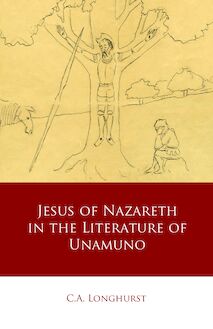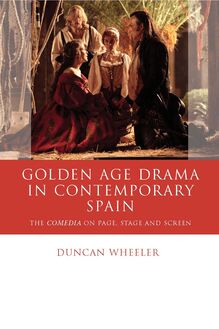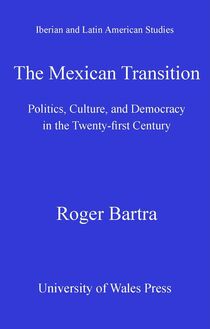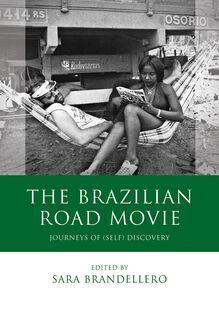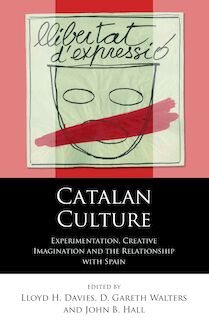Fantastic Short Stories by Women Authors from Spain and Latin America , livre ebook
97
pages
English
Ebooks
2019
Vous pourrez modifier la taille du texte de cet ouvrage
Obtenez un accès à la bibliothèque pour le consulter en ligne En savoir plus
Découvre YouScribe en t'inscrivant gratuitement
Découvre YouScribe en t'inscrivant gratuitement
97
pages
English
Ebooks
2019
Vous pourrez modifier la taille du texte de cet ouvrage
Obtenez un accès à la bibliothèque pour le consulter en ligne En savoir plus
Publié par
Date de parution
15 août 2019
Nombre de lectures
3
EAN13
9781786835109
Langue
English
The fantastic has been particularly prolific in Hispanic countries during the twentieth and twenty-first centuries, largely due to the legacy of short-story writers as well as the Latin-American boom that presented alternatives to the model of literary realism. While these writers’ works have done much to establish the Hispanic fantastic in the international literary canon, women authors from Spain and Latin America are not always acknowledged, and their work is less well known to readers. The aim of this critical anthology is to render Hispanic female writers of the fantastic visible, to publish a representative selection of their work, and to make it accessible to English-speaking readers. Five short stories are presented by five key authors. They attest to the richness and diversity of fantastic fiction in the Spanish language, and extend from the early twentieth to the twenty-first century, covering a range of nationalities, cultural references and language specificities from Spain, Mexico, Puerto Rico and Argentina.
Acknowledgements
The Fantastic: Towards a Feminist Perspective
Emilia Pardo Bazán - ‘La resucitada’ (1912)
Amparo Dávila - ‘El huésped’ (1959)
Rosario Ferré - ‘La muñeca menor’ (1976)
Cristina Fernández Cubas - ‘El ángulo del horror’ (1990)
Ana María Shua - ‘Vida de perros’ (2000)
General Bibliography
Temas de debate y discusión
Selected Vocabulary
Index
Other titles in the series
Publié par
Date de parution
15 août 2019
Nombre de lectures
3
EAN13
9781786835109
Langue
English
IBERIAN AND LATIN AMERICAN STUDIES
Fantastic Short Stories by Women Authors from Spain and Latin America
Series Editors
Professor David George (Swansea University) Professor Paul Garner (University of Leeds)
Editorial Board
Samuel Amago (University of Virginia) Roger Bartra (Universidad Autónoma de México) Paul Castro (University of Glasgow) Richard Cleminson (University of Leeds) Catherine Davies (University of London) Luisa-Elena Delgado (University of Illinois) Maria Delgado (Central School of Speech and Drama, London) Will Fowler (University of St. Andrews) David Gies (University of Virginia) Jo Labanyi (New York University) Gareth Walters (Swansea University) Duncan Wheeler (University of Leeds)
IBERIAN AND LATIN AMERICAN STUDIES
Fantastic Short Stories by Women Authors from Spain and Latin America
A Critical Anthology
EDITED BY PATRICIA GARCÍA AND TERESA LÓPEZ-PELLISA -->
UNIVERSITY OF WALES PRESS 2019
© The Contributors, 2019
All rights reserved. No part of this book may be reproduced in any material form (including photocopying or storing it in any medium by electronic means and whether or not transiently or incidentally to some other use of this publication) without the written permission of the copyright owner except in accordance with the provisions of the Copyright, Designs and Patents Act 1988. Applications for the copyright owner s written permission to reproduce any part of this publication should be addressed to the University of Wales Press, University Registry, King Edward VII Avenue, Cardiff, CF10 3NS.
www.uwp.co.uk
British Library CIP Data
A catalogue record for this book is available from the British Library.
ISBN 978-1-78683-508-6 e-ISBN 978-1-78683-510-9
The right of the contributors to be identified as authors of this work has been asserted in accordance with sections 77 and 79 of the Copyright, Designs and Patents Act 1988.
The publisher has no responsibility for the persistence or accuracy of URLs for any external or third-party internet websites referred to in this book, and does not guarantee that any content on such websites is, or will remain, accurate or appropriate.
Cover design: Olwen Fowler Cover image: Shiori Matsumoto, Private Time (2016), oil and acrylic on canvas. By permission.
Contents
Acknowledgements
The Fantastic: Towards a Feminist Perspective
Emilia Pardo Bazán La resucitada (1912)
Amparo Dávila El huésped (1959)
Rosario Ferré La muñeca menor (1976)
Cristina Fernández Cubas El ángulo del horror (1990)
Ana María Shua Vida de perros (2000)
Notes References General Bibliography Temas de debate y discusión Selected Vocabulary
Acknowledgements
T his critical anthology was made possible by financial support from the University of Nottingham, the Universidad Autónoma de Barcelona, the Institute of Modern Languages Research and the British Academy project Gender and the Fanstastic in Hispanic Studies (2017-18). For their advice and encouragement, we thank Prof. Catherine Davies as well as the Grupo de Estudios de lo Fantástico, directed by David Roas. For their help with the translations, we want to express our gratitude to our colleagues Simon Breden, Rocío Martínez and Steve Roberts, and specially Míde Ní Shúilleabháin for her invaluable thoroughness when reading the entire manuscript. Finally, this project would not have been completed without the time and space that the EURIAS programme at Helsinki Collegium for Advanced Studies has facilitated during 2018-19.
The Fantastic: Towards a Feminist Perspective
Patricia García
T his introduction discusses the etymology of the term fantastic and outlines different critical approaches as well as formal characteristics. This is followed by a brief transcultural historical overview on the evolution of the fantastic since its Gothic origins, including the often ignored relevance of women writers in this tradition.
Definitions of the Fantastic
The boundaries of the fantastic have long been the subject of controversy in literary criticism and in popular culture. We can nonetheless outline some theoretical parameters that allow for a better understanding of this narrative form. The fantastic often appears as a synonym of fantasy, of the supernatural or even associated with aesthetic representations of horror, the unusual, exotic or strange. In the Cambridge Dictionary Online the word is accompanied by the rather unhelpful explanatory label of not real ; in the Oxford Dictionary of British and World English by the formula remote from reality . The etymology of the word is, however, more revealing. The adjective phantastikos is related to the Greek phantos and phainein , visible and to show respectively. The verb phantazein means to make visible . These etymological roots suggest that the fantastic relates to the action of articulating and expressing (by rendering visible) something concerning our imagination. This type of logic corresponds with the etymology of what might be the best-known fantastic concept: the monster. From the Old French monstre (closely related to the verb montrer , in Spanish mostrar , to show) and the Latin root monere (to warn), the monster was traditionally thought to be the physical embodiment of a divine message sent to earth, a bad omen. The warning from the gods would take the shape of something unnatural, be this extraordinary size or a physical deformity. The etymology of both the fantastic and of the monster points to an important defining aspect of the supernatural: it is employed to render visible something hidden. As detailed in the following paragraphs, this feature has served as the point of departure for psychoanalytical and cultural theories of the fantastic, theories that regard the fantastic as a manifestation of something repressed in our psyche or in our culture. Regardless of the approach chosen to explore this form, its etymology remains relevant in the contemporary context: the fantastic is a way of expressing our fears and voicing our anxiety, as a society or as individuals, by means of an imaginary creature that transgresses the boundaries of what a culture considers the norm.
There are two main academic approaches to the fantastic in the arts: one that regards the fantastic as a synonym of the supernatural, while the other conceives it as a specific form (a subcategory) of the supernatural. The first of these approaches is dominant among scholars in English-speaking traditions, for example Eric S. Rabkin (1977), Kathryn Hume (1984), Neil Cornwell (1990), Brian Attebery (1992) and Lucie Armitt (1996). It is also the general approach adopted by the International Association of the Fantastic in the Arts in the United States. As a generic concept, the fantastic features interchangeably with that of fantasy literature to refer to any texts that deviate from realism. By this understanding, it embraces a variety of forms including horror, the Gothic, fables, the marvellous, science fiction, magical realism, fairy tales and myths. Scholars employing the fantastic as an umbrella term for all forms of the supernatural have tended to focus on the common denominator of all these forms. Some studies, for example, have approached the supernatural as a way of investigating the legacy of myths and folklore in our aesthetic construction of otherness and subversion. This point is made by Lucie Armitt, who regards the fantastic as a form transgressing boundaries, concerning itself with the world of the beyond (beyond the galaxy, beyond the known, beyond the accepted, beyond belief) (1996: 4). Therefore the fantastic should immediately alert us to the attendant difficulties it has coping with limits and limitations (1996: 4). Other studies examine the ability of fiction to construct a self-enclosed reality that violates our codes of logic. Most scholars claim a further integration of the supernatural as a narrative form within the exclusive canon of great literature and emphasise the importance of magic in storytelling as a means of taking control of an otherwise unmanageable reality. As Attebery remarks in this respect, [w]hen you convert history into story, you end up with precisely and only that - a story. And yet stories, by being different from nature or history, make nature accessible and history meaningful (1992: 141).
While agreeing on the inherently subversive discourse of the fantastic, this general approach is contested by another group of scholars, who champion a more precise aesthetic understanding of the fantastic in opposition to other forms of the supernatural. In this anthology, we follow this interpretation of the fantastic. We define the literary fantastic as a realistic text featuring an exception - a conflictive, supernatural element. The key term here is conflictive . By this definition, the fantastic differs from fantasy or the marvellous in that those two narrative forms present the supernatural as being normalised in their narrative world. The fantastic, in contrast, is always presented as a conflict within the fictional world: not only a moral violation, but also an ontological and epistemological impossibility. To emphasise this exceptional status within the norm, several tropes typically recur: for example, the negative discourse used to define the fantastic element ( un -natural, im -possible, extra -ordinary) and formulas expressing how its very presence challenges rational explanation.
In order better to appreciate the differences between non-mimetic genres (the marvellous vs. the fantastic, in this case), compare the following opening passages of three different works:
The Mole had been working very hard all the morning, spring-cleaning his little home. First with brooms, then with dusters; then on ladders and steps and chairs, with a brush and a pail of whitewash; till he had dust in his throat and eyes, and splashes of whitewash all over his black fur, and an aching back and weary arms. Spring was moving in the
